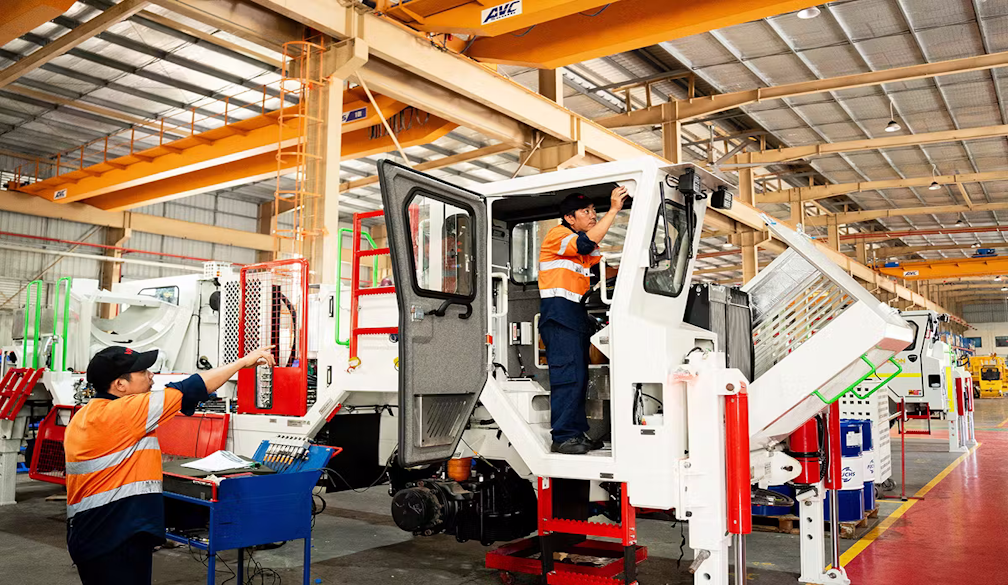The Essential Guide to Hydraulic Cylinder Repair: Keeping Your Equipment Running Smoothly

Hydraulic systems are integral to numerous industries, powering equipment from excavators to manufacturing machines. A key component of these systems is the hydraulic cylinder, responsible for converting hydraulic energy into mechanical force. However, like all machinery, hydraulic cylinders can experience wear and tear, making effective hydraulic cylinder repair essential for maintaining performance and safety.
Understanding Hydraulic Cylinders
Before diving into repair specifics, it’s crucial to understand what hydraulic cylinders are and how they function. Hydraulic cylinders consist of:
- Barrel: The cylinder’s outer casing, which holds hydraulic fluid.
- Piston: A movable component that creates pressure by pushing against the hydraulic fluid.
- Rod: A steel rod connected to the piston that transmits the generated force to perform work.
These components work together to facilitate linear motion, allowing machinery to lift, push, pull, and perform various tasks.
Common Causes of Hydraulic Cylinder Failures
Hydraulic cylinders can fail for various reasons, and identifying the cause is crucial for effective repair. Here are some common issues that lead to cylinder failure:
- Seal Damage: The seals within a hydraulic cylinder are essential for preventing fluid leaks. Over time, seals can wear out due to exposure to extreme temperatures, contaminants, or simply from aging.
- Corrosion: Environmental factors, such as moisture and chemicals, can lead to corrosion of the cylinder’s internal and external surfaces. This corrosion can weaken the cylinder and lead to leaks.
- Improper Maintenance: Lack of regular maintenance can lead to fluid contamination, low fluid levels, and other issues that contribute to cylinder failure. Regular checks are essential for prolonging the life of hydraulic components.
- Overloading: Using hydraulic cylinders beyond their specified load capacity can result in excessive pressure and strain, leading to premature failure.
- Temperature Extremes: Hydraulic systems operate best within specific temperature ranges. Extreme heat or cold can affect the performance of hydraulic fluids and cause components to expand or contract improperly.
Signs Your Hydraulic Cylinder Needs Repair
Being aware of the signs that your hydraulic cylinder needs repair can save you time and money. Look out for:
- Fluid Leaks: If you notice hydraulic fluid leaking from the cylinder, it’s crucial to address it immediately. This can lead to significant pressure loss.
- Reduced Performance: A decrease in the speed or power of the equipment often indicates a cylinder issue. If the machinery struggles to lift or move loads as it once did, it’s time for an inspection.
- Unusual Noises: Grinding, hissing, or clanking noises can indicate internal issues within the cylinder, such as wear or damaged components.
- Visible Damage: Physical signs of damage, like dents, scratches, or rust on the cylinder, should be addressed promptly to prevent further deterioration.
Steps Involved in Hydraulic Cylinder Repair
When a hydraulic cylinder requires repair, it typically involves several key steps:
- Inspection: Technicians will perform a thorough inspection to identify the source of the problem. This may include visual checks and performance tests.
- Disassembly: Once the issue is identified, the cylinder is disassembled carefully. Each component is examined for damage or wear.
- Replacement of Damaged Parts: Any worn or damaged parts, such as seals, rods, or the piston itself, will be replaced with high-quality components to ensure optimal performance.
- Reassembly and Testing: After repairs are completed, the cylinder is reassembled and tested to ensure it meets performance standards. This step is crucial for verifying that the repair was successful.
- Preventive Maintenance Recommendations: Post-repair technicians often provide recommendations for preventive maintenance to avoid future issues. This may include regular inspections, fluid checks, and operator training.
Choosing the Right Repair Service
Finding the right service provider for hydraulic cylinder repair is vital for ensuring quality and reliability. Here are some factors to consider:
- Expertise and Experience: Look for a company with extensive experience in hydraulic repair. Experienced technicians are better equipped to diagnose and resolve complex issues.
- Quality Assurance: Choose a service that prioritizes quality, using OEM (Original Equipment Manufacturer) parts and adhering to industry standards.
- Customer Support: Reliable customer support can make a significant difference. Look for a service provider that offers ongoing support and maintenance options.
- Turnaround Time: Consider the time it takes for repairs. A prompt turnaround is essential for minimizing equipment downtime.
Conclusion
In summary, understanding the importance of hydraulic cylinder repair is essential for maintaining the efficiency and safety of hydraulic systems. Regular maintenance, timely repairs, and choosing the right service provider can prolong the life of hydraulic cylinders and keep your equipment operating at peak performance.
Whether you are in construction, manufacturing, or agriculture, recognizing the signs of hydraulic cylinder issues and addressing them promptly can save you time, money, and resources. By investing in proper maintenance and repair, you can ensure your machinery remains reliable and efficient for years to come.










